Corridors: species, maintenance, feeding and breeding
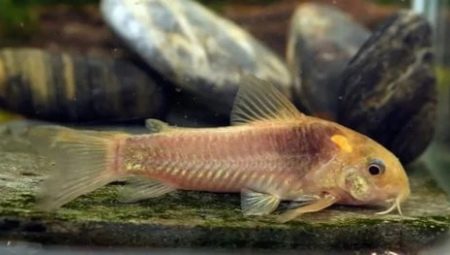
Many people prefer quiet and unobtrusive fish when choosing pets. These underwater inhabitants are able to become not only calm "neighbors", but they can also decorate the interior. There are many types of fish that can be kept in a home aquarium. The corridor aquarium catfish is often found on sale in pet stores, let's get to know them better.
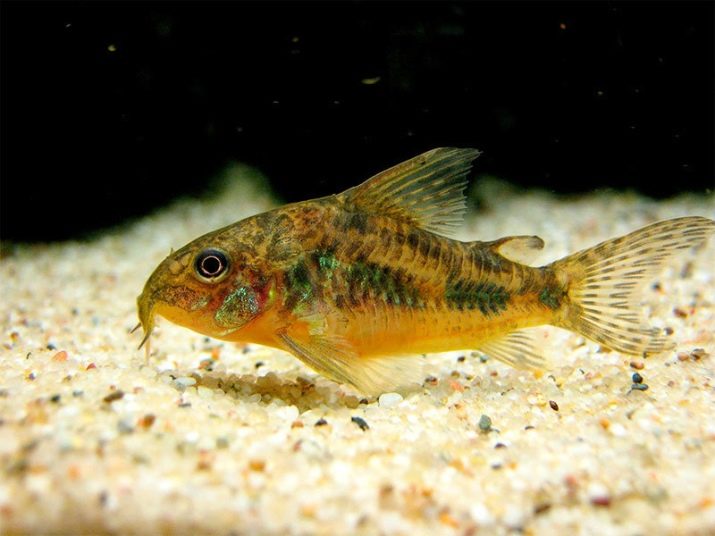
Description
The homeland of this species is the southeast of South America. Corridors are found in the waters of the La Plata River, as well as in warm, fresh lakes. These individuals like to be in places where the bottom is covered with silt or sandstone. From the loosened soil, they extract food in the form of larvae and worms. At the moments when rivers overflow, the corridors end up in smaller bodies of water.
The fish belonging to this species are small in size and have a characteristic convex back. There are unusual bone plates on the body of the corridor.
They should not be confused with scales - these are completely different elements. Due to a similar structural feature of these catfish, they are also called armored.
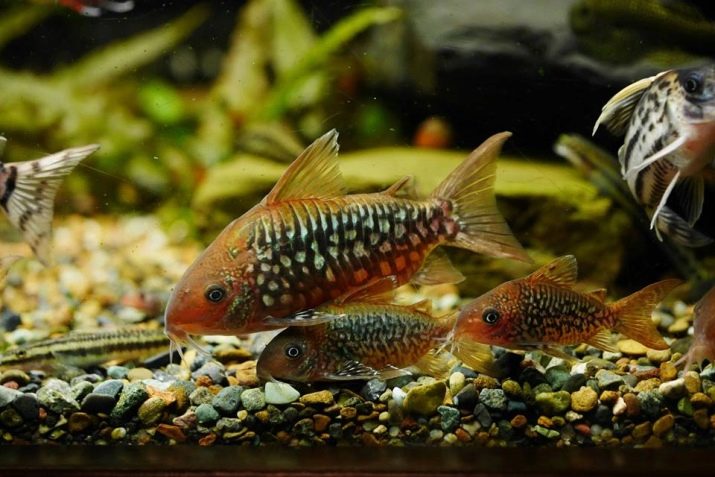
The corridors are characterized by low-lying mouth. This is due to the fact that fish usually catch food from the bottom. There are three whiskers on the upper and lower lips of the catfish. They are necessary for the orientation of individuals in the underwater space. The antennae are especially useful if the fish is in highly turbid water.
The average size of the corridors is usually 3 to 10 cm. The life span of fish is considerable - with proper care and maintenance, catfish can live up to 15 years. The color of fish may vary. There are even albinos.
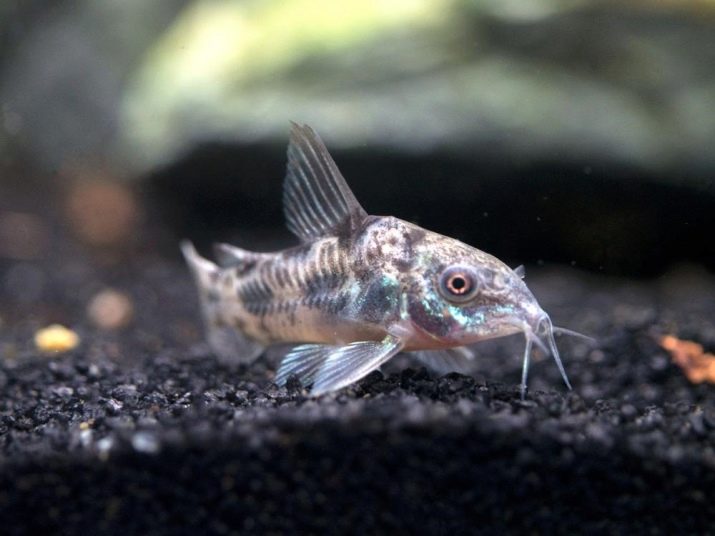
Catfish of this species are characterized by an unusual respiratory system. She is double:
- branchial;
- intestinal.
It is not difficult to determine the sex of the catfish in the corridors. Females have a brighter and more expressive coloring, and also have a neat, slightly rounded fin on their back.
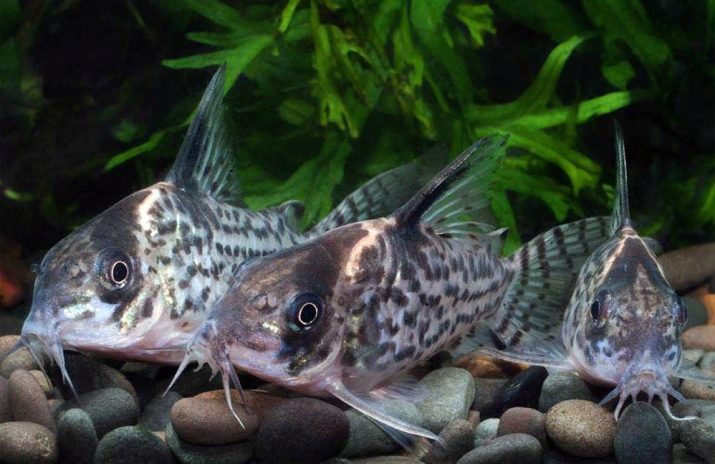
Advantages and disadvantages
Catfish of this popular species have their pros and cons. Let's start with the positives.
- The corridors are unpretentious in terms of care and maintenance. Large sums of money will not have to be spent on feeding them. Finding the optimal environment for them will not be difficult - they can live in both slightly acidic and alkaline environments.
- There are many types of corridors. They have differences, especially in terms of external data. You can choose beautiful and interesting underwater pets for every taste.
- The corridors are bottom fish. They eat up the remains of feed that have fallen to the bottom. Thus, the described catfish protect the aquarium from the negative effects of decaying products.
- Such catfish can be found in almost any pet store. You don't have to find them all over the city. The only exceptions are some types of corridors.
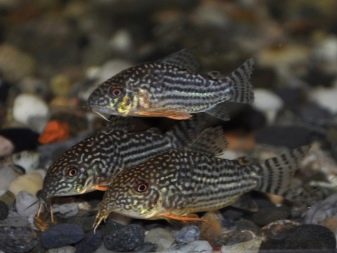
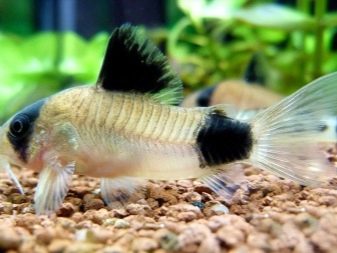
Now let's analyze the cons of soms.
- Since the corridors are bottom fish, they spend most of their time moving along the bottom. Very often they dig into the ground, which ultimately leads to cloudy water in the tank.
- It is important for these fish to carefully select the right soil. It should not contain sharp elements, otherwise the corridor can be seriously injured and killed.
- Representatives of some varieties of corridors do not reproduce well in aquarium conditions.
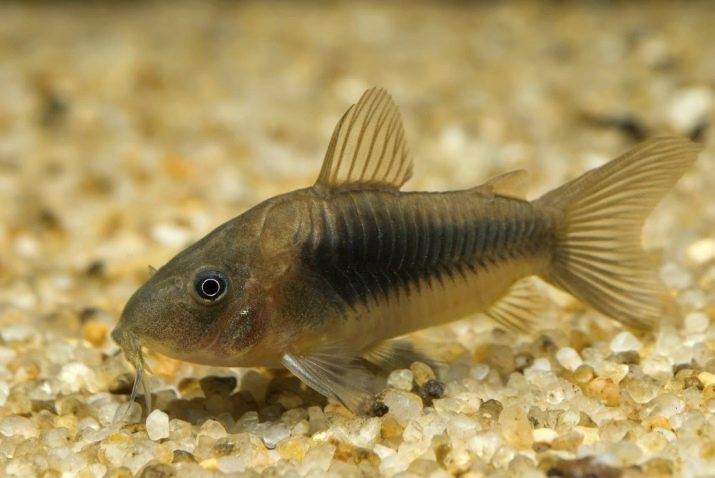
Views
There are many types of corridors. Each representative of its species has certain characteristics and external distinctive features.
Golden
The main characteristic feature of the representatives of this species is a golden stripe stretching along the back. These catfish are also small in size. Most often they grow up to 4-7 cm. Complex care for these underwater pets is not required. The main thing is to take care of the optimal water temperature in the aquarium - it should reach +22.26 degrees Celsius.
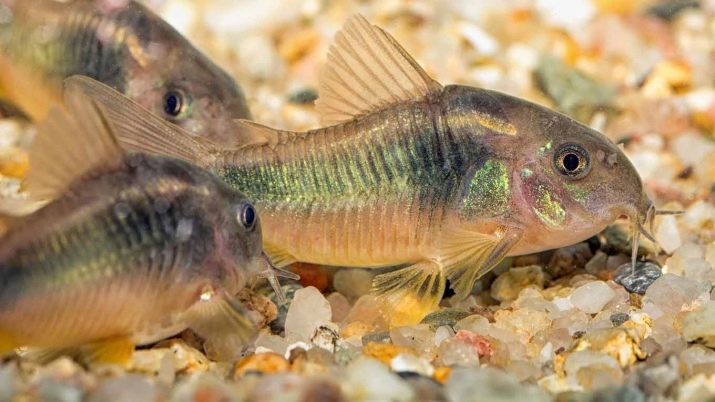
Panda
The homeland of these catfish is Peru. Here their main habitat is the Ucayali River. The main natural color of this fish species is white. In some individuals, an unobtrusive, pinkish tint is visible on the body.
There are large black spots on the dorsal fin, ocelli and at the base of the tail. Panda corridors are miniature in size - usually no more than 3-4 cm. If there is no live food in the diet of these individuals, they grow very slowly and can be even more modest in size.
In care, such catfish are also undemanding.
The main thing is that the water where they live is clean and slightly acidic. The temperature should not exceed +22 degrees. There must be regular aeration in the tank.
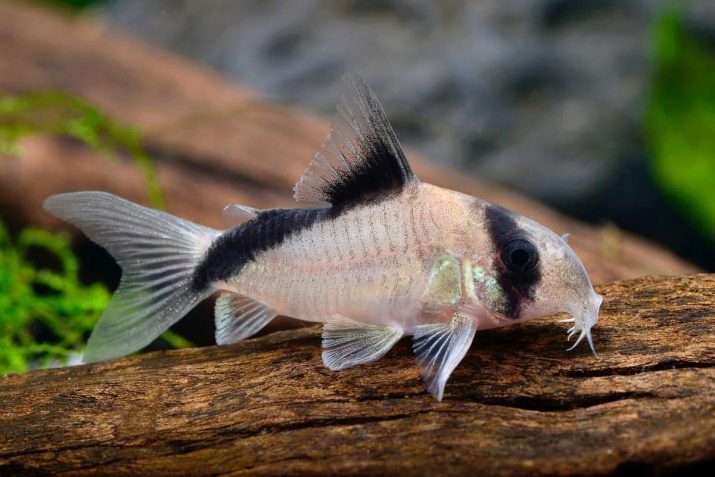
Sparrow
It is a dwarf catfish found in South America. Such fish are characterized by a stocky and translucent body. They are elongated in structure, the sides are slightly flattened. A horizontal dark stripe runs through the entire body.
It is not difficult to distinguish a female from a male. Males grow miniature, have a dorsal fin pointed at the end. In females, this part is rounded.
Corridor sparrow is called dwarf for a reason. Adults of the species rarely exceed 3 cm in length (like the caudimaculatus, which grows to 2.5-3 cm).

Rabauti
The corridors of this species have a stocky body structure, they are elongated in length. The color of the fish is beautiful - orange, but the level of its intensity can vary from light to dense, saturated.
The dimensions of the rabout are small. Their average length is 5.5-6.5 cm. These underwater pets are used to staying close to the bottom, but they can also be found in the middle layers or even near the surface of the aquarium. By nature, the slaves are peaceful, they do not show aggression towards other inhabitants of the home reservoir.
The exceptions are those cases when it comes to the neighborhood with smaller fish. They can eat both dry and frozen live food.
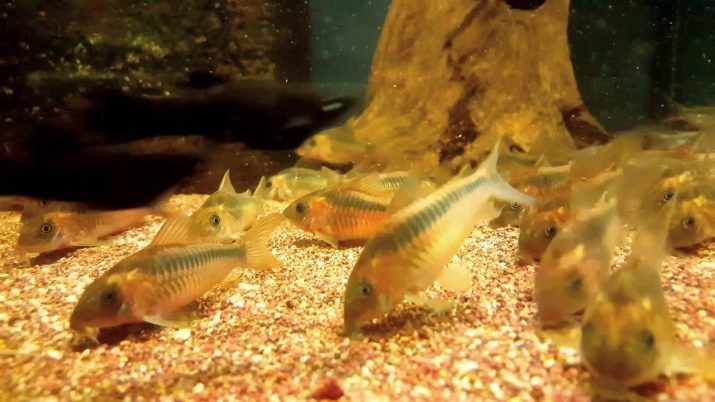
Similis
Corridors with an elongated body tapering towards the tail. They are characterized by a curved back line and a flat abdomen. The color can be light beige or yellowish, with a pink tint at the bottom. On the back and head there are characteristic, well-visible dark spots.
Similis females are larger than males. They have a slightly convex belly. The sex of this species is easiest to determine if you look at them from above - the males look much slimmer.
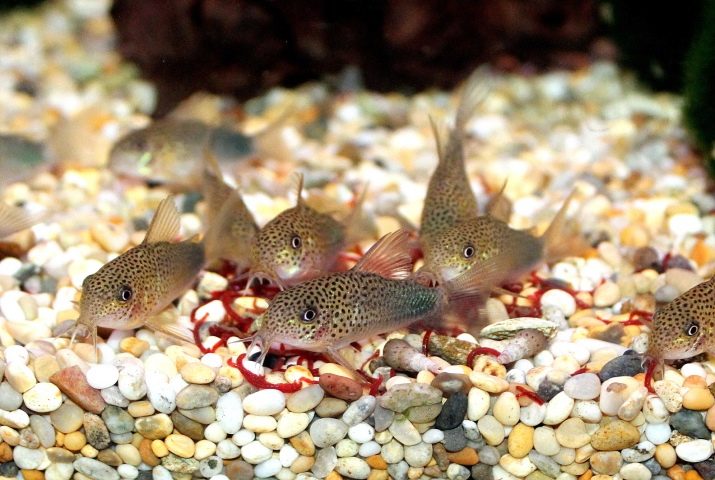
Schultz
The Schultz corridor is of medium size, the body shape is elongated. The main body color of the fish is light, but can vary greatly. There is a characteristic pattern consisting of a large number of dark dots connected in lines, which are located in a specific sequence. As in other cases, females are larger than males. This difference is especially striking before spawning.
The average maximum size of these fish is 7.5-8.5 cm. They prefer to stay in the lower layers or at the very bottom. It is in these areas of the corridors that the Schultz get into flocks and go in search of food.

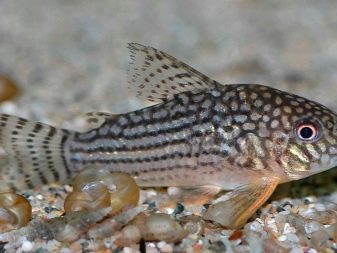
Hastatus
This schooling fish spends all day exploring the middle layers of the water. Individuals of this species undemanding neither in care, nor in the specific parameters of the liquid in the aquarium. Hastatus is small in size. These fish do not depend in any way on the level of lighting in the container. Daylight does not scare them.
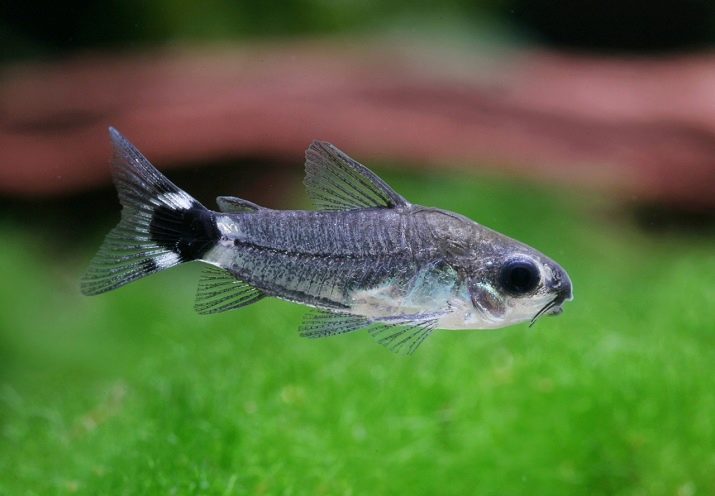
Zygatus
This species has much in common with its other relative, the Rabo corridor. There are no noticeable differences between them. However, the zygatus is larger than its counterpart in size. Its average length is usually 6-7 cm. There is a dark stripe on the back. Depending on the lighting, playful orange tones can be added to the silvery color.
Corridoras Zigatus is the perfect solution for the novice aquarist. These fish are unpretentious to care for. They can easily adapt to any environment. The main thing is that any changes in their content should be gradual and not abrupt.
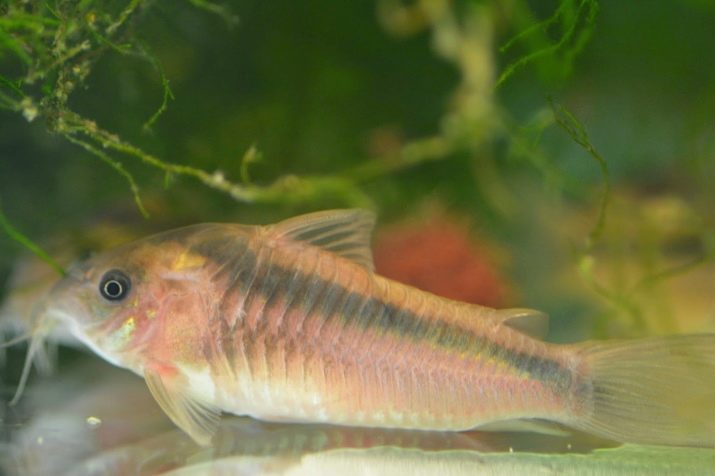
Leopard print
In another way, this three-line type of corridor is called trilineatus. These are small fish, they can be kept in a small aquarium, the volume of which is only 20-30 liters. 5-6 individuals can comfortably live in such a reservoir.
Leopard catfish have an interesting appearance. They are characterized by a light body coloration with a dark contrasting pattern, very similar to the skin of a leopard.
There is a large, dark spot on the fins and tail. On the lateral parts of the body, there are 2 stripes.
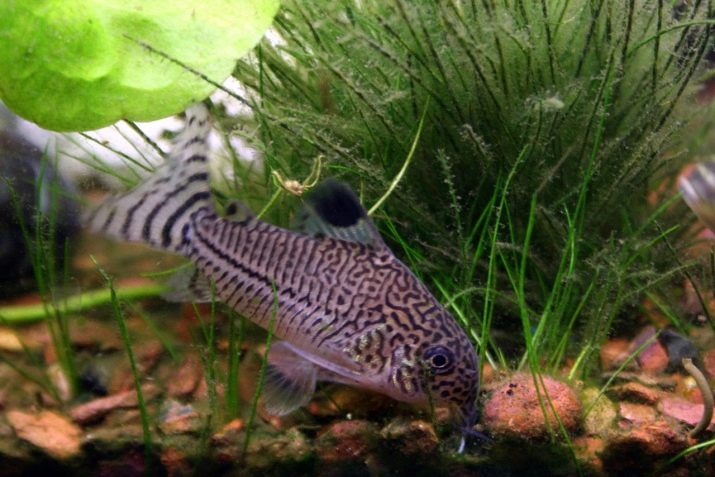
Melini
This is a peaceful and plastic little fish. Complex care for the melini corridor is not required. It has an interesting contrasting color. This subspecies is rare. Its maximum size does not exceed 6 cm.
Melini are peaceful by nature. They feel comfortable in small warm-water aquariums. Soft, diffused light is ideal for them. It is advisable to select a soil with a crumbly structure for melini. The reservoir where such fish can live must be at least 15 liters in volume.
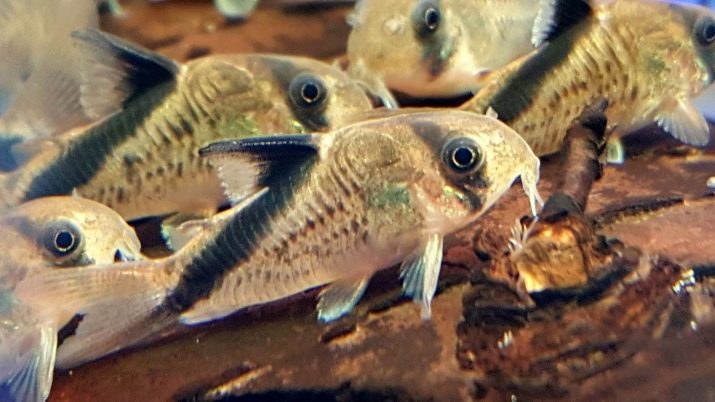
Concolor
These are gray fish, the average size of which is 5-6 cm. The fins and tail have a characteristic bronze tint. Greenish reflections are also found on the body, especially in the area behind the operculum.
Concolor catfish prefer to flock. They are omnivorous and unpretentious in matters of care. They need clean water. Aquarium neighbors should not be too aggressive and territorial.
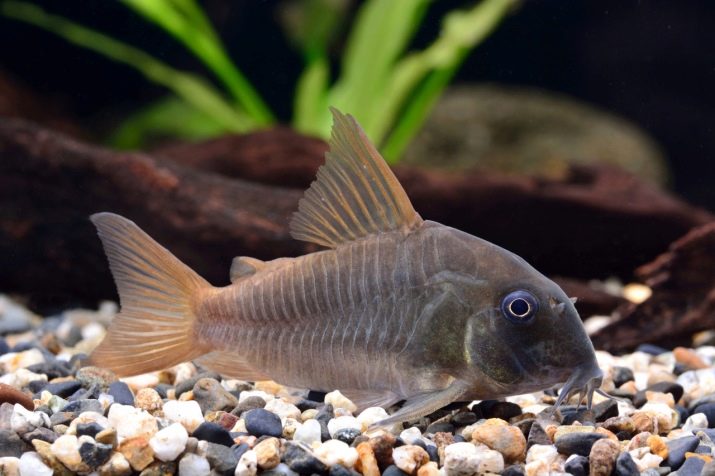
Venezuela orange and black
Interesting-looking beautiful fish. Are peaceful and sociable. Belong to a social category. To reveal the behavior that is standard for these individuals, it is necessary to keep at least 4-6 pets in one group.
By nature, the fish of this species are calm.The best neighbors for them are individuals with similar sizes and approximately the same behavior. It is better not to settle Venezuelans in the vicinity of aggressive fish.
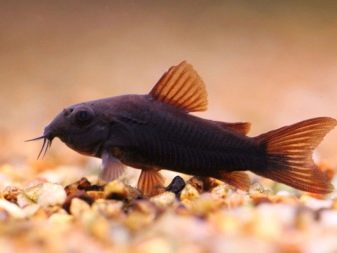
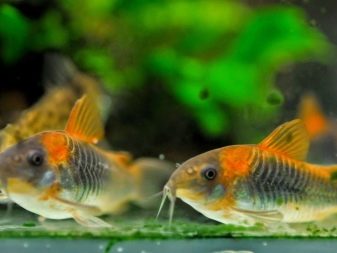
Eques
In length, these catfish reach 5-5.5 cm. Females are always denser and fuller than males. They behave peacefully, are schooling fish. They get along well with other peaceful, not too aggressive species. Need dense vegetation and plenty of cover. It is also necessary to leave a place for swimming.
These fish have a short body and a high back. Their body color is dark beige, with a beautiful reddish tint.
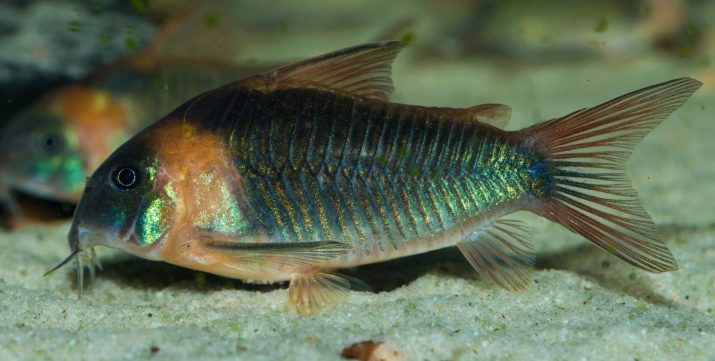
Arquatus
Non-aggressive two-lane corridors. The body color is golden with an attractive sheen. A dark, contrasting stripe stretches along the back to the very tail. As in most other cases, females are larger and fuller than males. The average length is 5 cm.
In the aquarium where the Arquatus catfish live, it is necessary to place a large number of shelters, snags. High-quality sand is recommended as a soil.... These fish have both gill and intestinal respiration.
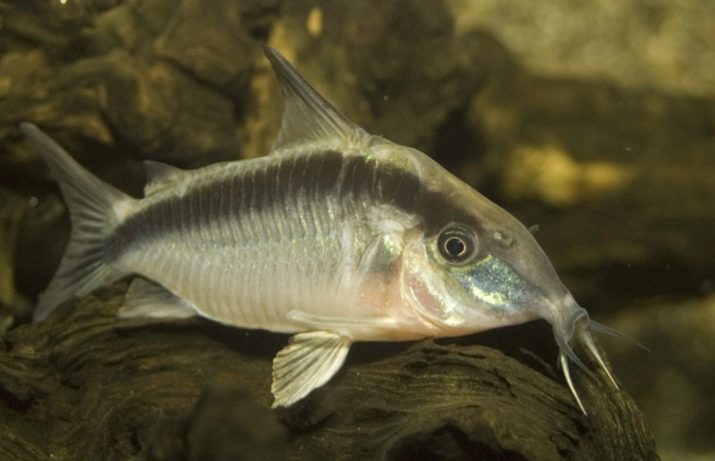
Speckled (paleatus)
These fish have a small body with a convex back. On the surface there is a carapace consisting of two rows of bone plates. The characteristic color is olive-gray. A large number of visible specks are present. The abdomen is pinkish with a beautiful golden tint.
These are peace-loving, bottom-dwelling fish. Food is picked up from the bottom, but it can also rise to the surface of the water. There they are able to swallow floating food, emitting a characteristic loud chewing.
There is also a speckled veil corridor.
Its body color is pale olive with a greenish or blue iridescent sheen. There are dark spots scattered over the surface of the "shell". The lifespan of these individuals usually ranges from 3 to 5 years.
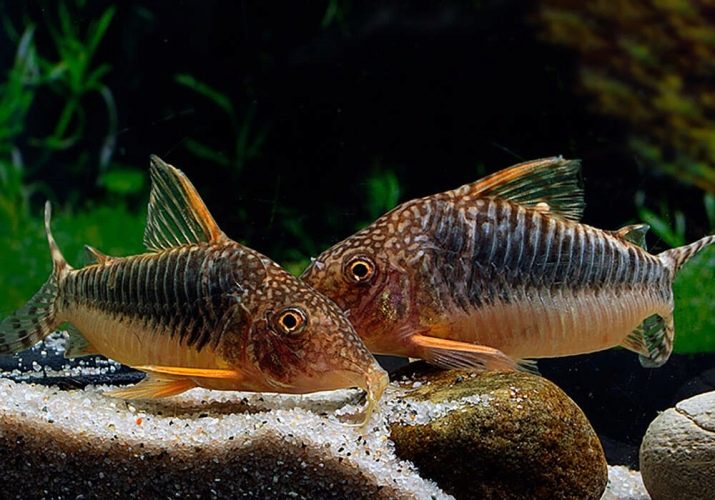
How to choose?
When choosing catfish corridors, you should pay attention to a number of parameters.
- Are there other fish in the same aquarium with catfish that are sick?
- The behavior of the corridors themselves is important. Healthy individuals are active, move briskly, swim up to the surface, grab air, and descend to the bottom without any problems. Sick fish are chaotic in their movements, topple to one side, move uncertainly.
- There should be no defects or damage on the catfish whiskers.
- Reddish-brown markings on the body of the fish indicate the presence of fungus or infections.
- If the belly of the fish is sunken, it means that it suffers from worms.
- Healthy individuals will have clear eyes, without film or turbidity.
- Do not buy catfish with red or inflamed gills. A problem like this could indicate that the catfish are poisoned with nitrates.
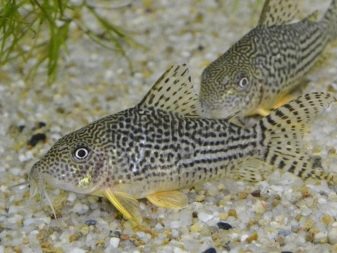
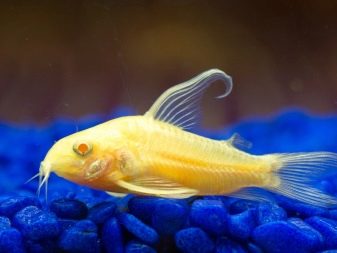
Content rules
Corridors are bottom fish, so it is important to choose the right soil, take care of the free area for them. It is better to lay dark sand or fine gravel at the bottom. The main thing is that the latter has smooth edges. It is worth placing live plants, mosses, ferns in the container. The root system of plants must be strong so that the corridors cannot dig it.
It is desirable to keep such catfish in groups of 5-8 individuals. You don't need to buy an aquarium that is too large for them. For a group of 8 fish, a capacity of 50-60 liters is enough.
For lighting, it is recommended to buy not too bright lamps. There should be shaded areas in the aquarium. It is worth placing grottoes, caves, driftwood and other similar shelters in the tank.
It is important to equip the aquarium with a quality aerator and filter. There should be enough water so that the corridors have the opportunity to freely swim to the surface in order to take a breath of fresh air.
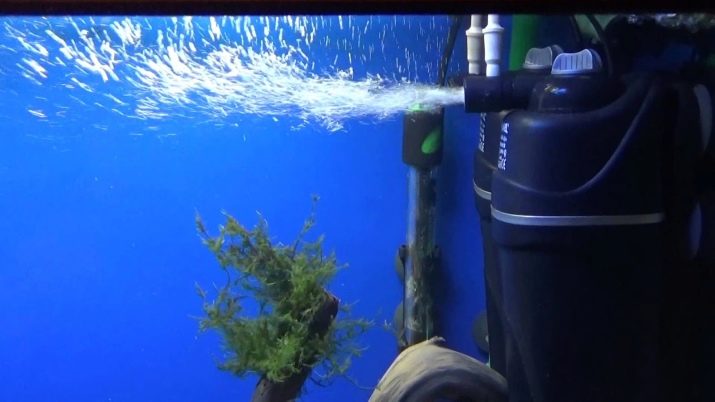
The water in the aquarium where the corridors live must have certain parameters:
- temperature - +22.26 degrees Celsius;
- acidity level - 5.5-8.0 pH;
- the degree of hardness is 5-19 dH.
You need to change the 4th part of the water in the tank weekly. The soil should be cleaned every 14-15 days.Make sure that there are no stones or debris on the bottom that could harm the fish.
We need to feed the corridors properly. They eat whatever gets to the bottom. They are picky about food.
You can give special catfish tablets consisting of herbal ingredients. Feeding with live or frozen tubules, bloodworms is allowed. They eat well dry and pellet feed.

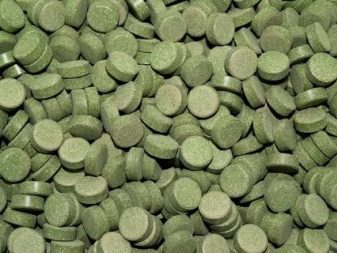
Breeding
Many aquarists are interested in how these fish are bred at home. Fish are ready for breeding at the age of 1-2 years... In the natural environment, spawning occurs in November-December, and in the aquarium, spawning will be facilitated by a decrease in temperature. At this time, it is better to transplant the catfish into a separate tank (at least 60 liters). After that, you need to wait 8-10 days until the individuals get used to the new environment. It is important to create the same conditions as in the general aquarium.
During spawning periods, several males "chase" the female around the aquarium. She chooses the best of them. Then he releases the seed, which the female takes into her mouth. After that, she creates from the pectoral fins something very similar to an impromptu basket, where she lays about 15-20 eggs.
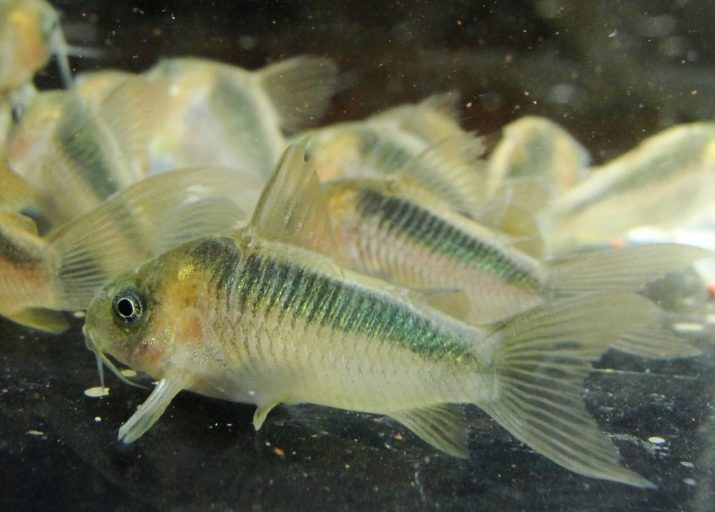
Then the female finds a separate place in which she begins to grind the milk and glue the eggs. As a rule, she does this on glass, plant leaves, grottoes and other bases.
The fry emergence period can be up to 10 days. When, after 5-7 days, the babies set sail, they are fed with "live dust", followed by food - brine shrimp. After a month, the fry can be transplanted into a common aquarium.
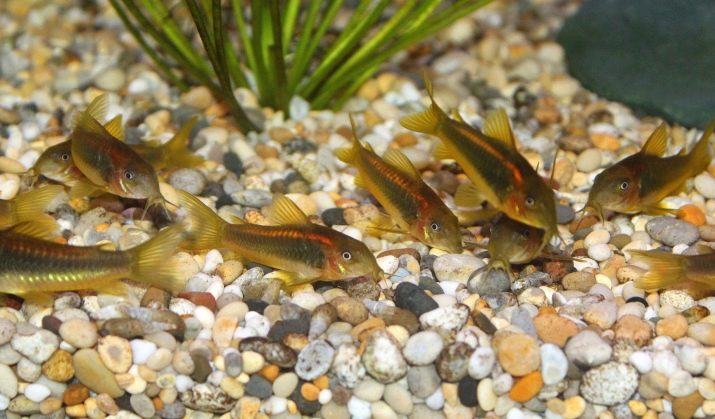
Compatibility with other fish
Oridoras get along well with several types of aquarium fish:
- guppy;
- gourami;
- zebrafish;
- swordtails;
- scalars;
- platies;
- discus;
- mollies;
- ancistrus and many others.
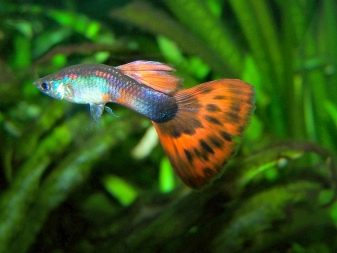
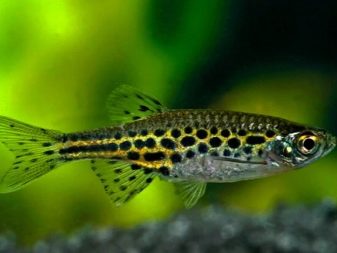
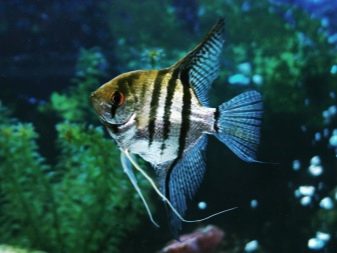
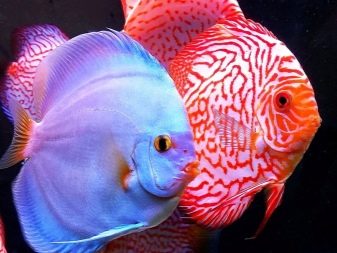
They can coexist with shrimps, eels and barbs in different ways. There are also such types of fish with which the corridors cannot be settled in any case:
- African and South American cichlids;
- Koi carps;
- astronotuses;
- goldfish;
- large predatory fish.
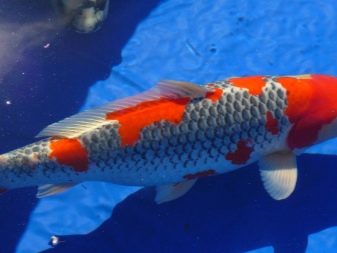
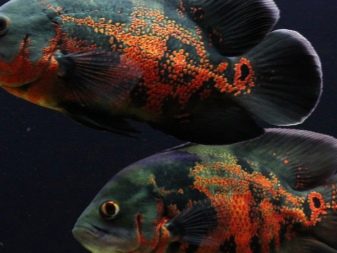
For the maintenance and breeding of corridors, see below.








